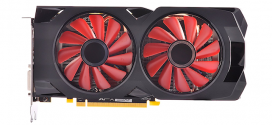Testing and Methodology
The OS we use is Windows 10 Pro 64bit with all patches and updates applied. We also use the latest drivers available for the motherboard and any devices attached to the computer. We do not disable background tasks or tweak the OS or system in any way. We turn off drive indexing and daily defragging. We also turn off Prefetch and Superfetch. This is not an attempt to produce bigger benchmark numbers. Drive indexing and defragging can interfere with testing and produce confusing numbers. If a test were to be run while a drive was being indexed or defragged, and then the same test was later run when these processes were off, the two results would be contradictory and erroneous. As we cannot control when defragging and indexing occur precisely enough to guarantee that they won’t interfere with testing, we opt to disable the features entirely.
Prefetch tries to predict what users will load the next time they boot the machine by caching the relevant files and storing them for later use. We want to learn how the program runs without any of the files being cached, and we disable it so that each test run we do not have to clear pre-fetch to get accurate numbers. Lastly we disable Superfetch. Superfetch loads often-used programs into the memory. It is one of the reasons that Windows Vista occupies so much memory. Vista fills the memory in an attempt to predict what users will load. Having one test run with files cached, and another test run with the files un-cached would result in inaccurate numbers. Again, since we can’t control its timings so precisely, it we turn it off. Because these four features can potentially interfere with benchmarking, and are out of our control, we disable them. We do not disable anything else.
We ran each test a total of 3 times, and reported the average score from all three scores. Benchmark screenshots are of the median result. Anomalous results were discounted and the benchmarks were rerun.
Test Rig
| Test Rig “Hexzilla” |
|
| Case Type | |
| CPU | |
| Motherboard | |
| Ram | |
| CPU Cooler | |
| Hard Drives | |
| Optical | Liteon DVD Burner |
| GPU | |
| Case Fans | 1 x 180mm Mosfet / CPU / Ram cooling fan 1 x 120mm PCI-E Cooling Fan |
| Docking Stations | None |
| Testing PSU | |
| Legacy | None |
| Mouse | |
| Keyboard | |
| Any Attempt Copy This System Configuration May Lead to Bankrupt | |
 Bjorn3D.com Bjorn3d.com – Satisfying Your Daily Tech Cravings Since 1996
Bjorn3D.com Bjorn3d.com – Satisfying Your Daily Tech Cravings Since 1996









You’ve made an error and put the BF4 4K table in where the Far Cry 4 4K table should be. You’ve even written you paragraph below based on the wrong results!
Try proof reading.
Correction Made Thanks
After I originally commented I seem to have clicked the
-Notify me when new comments are added- checkbox and from now on whenever a comment is
added I get four emails with the same comment.
Is there an easy method you are able to remove me from that service?
Thanks a lot!
Hi Mark. I would like to see this result again with the XFX Fury card but this time in Ultra Wide monitor. Like 3440×1440 to as high as 3800×1600 21:9 to put that bandwidth to the tests. I strongly suggesting 1000’s series added to the test with the former 900’s Nvdia card just for fairs comparison as the driver relive update make the older same architect chip perform better. It only a outdated model but would it be fair those who brought the HD 7000’s, R9 200x Hawaii, R9 300x Refresh, and the Fury Nano card hold today in future investment and the 290x being the best investment card of the series in my opinion. With or without the Nvdia 1000’s or AMD 400’s is up to you.